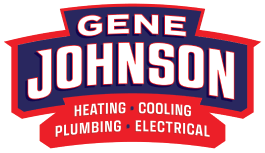Water pipes in your home can be made from many different materials depending on when it was built. While many of these lines are made of metal, they still have an average life expectancy and may need to be replaced at some point. Repiping, or water line replacement, is the process of replacing the water supply lines that run along the inside of your home.
Owning an older home is one reason to repipe. If your home was built in the 1970s, it is 50 years old, and galvanized steel pipes were commonly used in that era. This type of piping is susceptible to erosion and prone to bursting as it is approaching the end of its expected service life.
Reduced water pressure can be another reason to replace the water lines in your home. Galvanized pipes are also known to form buildup on the inside from calcium deposits or corrosion over time. Another symptom of reduced water pressure or volume is when the shower gets hot when a plumbing fixture is used in another room simultaneously. Since your plumbing services multiple areas of the home, if there is not enough flow, the cold water supply is removed from the shower to serve the other plumbing fixture that is being used.
Your home has polybutylene piping. Polybutylene is a plastic used in millions of homes in the Pacific Northwest between 1978 and 1995, which is prone to fail without reason. These pipes generally appear dull grey or white and were used for underground water mains and interior plumbing needs. While the cause of their failure was never determined, many experts believe that oxidants in public water supplies such as chlorine interacted with the piping and the acetyl fittings causing them to flake and become brittle. The structural integrity gets compromised and becomes weak and unstable, resulting in pipe failure and water damage inside the home. Many families reported returning home after several days away only to find tens of thousands of dollars worth of damage and weeks, if not months, of construction time to replace damaged pipes, drywall, carpeting, and other items.
You own an old home with copper plumbing that is starting to corrode or oxidize. Copper plumbing is among the most common in Washington homes built between the 1940s and the late 1980s. There are different types of copper piping used in residential and commercial plumbing, depending on the application, so it is essential to know which you are dealing with when estimating the life expectancy of your plumbing. Type K copper can be identified by green writing or lines on the outside. It is the strongest and heaviest of the three different types and is typically used in the harshest environments such as deep underground service, under sidewalks, or driveways. The average life expectancy of type K is 50 years or more. Type L is identified by blue writing or lines on the outside. It is slightly thinner and, therefore, lighter and typically used in most water supply and pressure applications. The life expectancy of type L copper is 25-30 years. The thinnest and easiest copper piping to work with is type M which is identified by red lines on the outside. This type is generally used in low-pressure applications as the thin walls cannot withstand higher pressures and temperatures. Type M is expected to last 20 years or longer.
If you are unsure of the plumbing used in your home or would like an expert plumber to assess your current situation, contact your fast and friendly plumber serving the Seattle and Mukilteo area since 1976.





